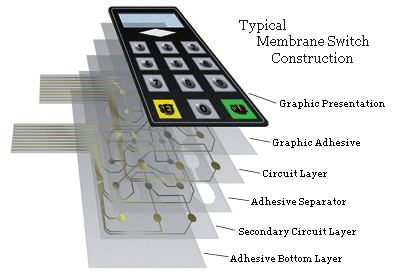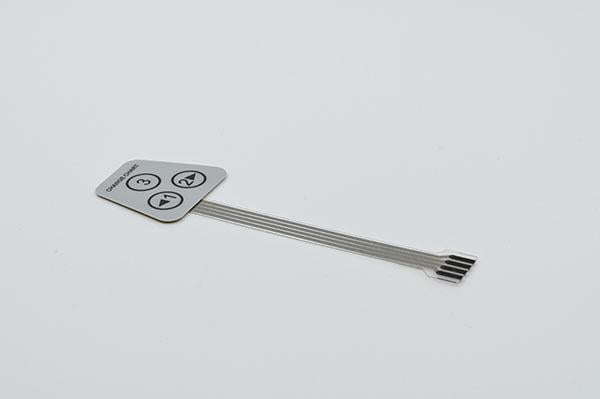Everything About Membrane Change: Comprehending Its Layout and Performance
When you assume concerning the control user interfaces in modern gadgets, membrane layer buttons often come to mind. These components are much more than just buttons; they blend style and capability seamlessly. Recognizing just how they function and what makes them effective can alter your point of view on everyday electronic devices. There are nuances to their design and performance that you could not be mindful of. Let's explore what collections membrane switches over aside from other control systems.
What Are Membrane Layer Switches?

Membrane buttons can also be personalized regarding form, dimension, and graphics, enabling manufacturers to create distinct user interfaces customized to specific items. On the whole, membrane buttons play a significant role in enhancing user experience throughout a wide selection of applications.
How Membrane Switches Job
When you push a secret on a membrane button, it activates a simple yet effective system. membrane switch manufacturer. The top layer, commonly made of versatile product, pushes down onto a conductive layer underneath it.
You'll notice that the tactile responses differs based upon the switch style, supplying either a soft click or a more noticable action. When you release the key, the membrane go back to its initial position, reopening the circuit and quiting the signal. This procedure occurs practically instantaneously, making certain a responsive user experience.
Membrane switches are preferred due to their longevity and resistance to dust and dampness, making them ideal for different applications, from house devices to medical gadgets. Comprehending this procedure assists you appreciate their extensive usage.
Key Components of Membrane Buttons
Recognizing the vital components of membrane buttons is basic for realizing their functionality and style. The protective layer shields versus environmental variables and wear, prolonging the button's life-span. By recognizing these parts, you'll get insight right into exactly how membrane layer switches run and their significance in different applications.
Materials Utilized in Membrane Layer Switch Style
The performance and sturdiness of membrane layer changes heavily depend upon the materials utilized in their design. You usually run into polyester and polycarbonate as key substratums because of their exceptional stamina and versatility. These materials stand up to scrapes and chemicals, making them ideal for requiring atmospheres.
The conductive layers frequently utilize silver or carbon, picked for their dependability and conductivity. membrane switch manufacturer. Silver provides remarkable performance, while carbon is a cost-effective alternative. For the overlay, you may consider a matte or glossy surface, relying on your aesthetic needs and customer experience
Make particular to select adhesives that withstand ecological elements like temperature and humidity. Picking the appropriate products will assure your membrane layer button stands the test of time.
Style Factors To Consider for Membrane Layer Switches
While creating membrane layer buttons, it's crucial to take into account numerous elements that affect their functionality and user experience. Begin by focusing on the design and switch size; make particular they're user-friendly and very easy to navigate.
Do not overlook the graphic style; clear labeling and color comparison are substantial for exposure. Validate your design accommodates environmental aspects, like dampness or temperature level variants, click resources which can impact efficiency. Ultimately, remember the relevance of screening prototypes with real users to collect responses and make necessary modifications. This repetitive process helps you refine the layout, verifying it meets both functional and aesthetic needs properly. By meticulously taking into consideration these aspects, you'll produce a membrane switch that boosts usability and contentment.
Applications of Membrane Buttons
Membrane buttons are flexible parts discovered in various applications, from commercial devices to consumer electronic devices. You'll see their impact in machines that need sturdy user interfaces and in devices that take advantage of smooth layouts. Comprehending these applications helps you value the functionality and practicality of membrane layer switches in day-to-day innovation.
Industrial Equipment Usage
When you're looking to improve the performance of industrial tools, membrane layer buttons provide a reputable service that integrates durability with user-friendly style. These buttons are best for rough environments, giving resistance to dirt, moisture, and chemicals. Embrace membrane switches to improve your operations and boost total efficiency.
Customer Electronic Devices Integration
In the More Help domain of customer electronics, membrane layer switches play an essential duty in improving user communication and tool capability. Membrane buttons likewise assure toughness and resistance to dust and dampness, expanding the life-span of your electronics. By picking membrane switches, you enhance not simply the performance however additionally the style of your tools, making everyday communications smooth and enjoyable.
Benefits and Negative Aspects of Membrane Switches
While membrane buttons supply an array of advantages, they additionally come with some disadvantages that you need to consider. One significant advantage is their small design, making them optimal for space-constrained applications.

Membrane switches can have a much shorter lifespan compared to mechanical buttons, website here particularly under heavy usage. They can additionally be less responsive, which might affect user comments during procedure. Balancing these pros and cons will assist you figure out if membrane layer switches are the ideal fit for your project.
Regularly Asked Questions
The Length Of Time Do Membrane Switches Generally Last?
Membrane switches generally last in between 5 to one decade, depending upon use and environmental problems. You'll wish to evaluate factors like wear, direct exposure to moisture, and temperature variations to assess their long life properly.
Can Membrane Switches Be Customized for Particular Styles?
Yes, you can tailor membrane switches to fit certain layouts (membrane switch manufacturer). You'll have the flexibility to pick colors, shapes, and designs that match your task's demands, guaranteeing they mix flawlessly with your total aesthetic
What Is the Cost Variety for Membrane Switch Production?
The cost range for membrane layer switch production commonly drops between $1 and $10 per unit, relying on aspects like design complexity, quantity, and products. You can obtain quotes from producers to locate the ideal alternative.

Are Membrane Switches Over Water Resistant or Resistant?
Membrane buttons can be made to be waterproof or resistant, depending on materials utilized and construction approaches. If you need them for damp settings, guarantee you specify those requirements during the style procedure.
Just How Do Membrane Changes Contrast to Typical Switches?
Membrane buttons are typically thinner and much more adaptable than conventional buttons, offering a sleek style. They're usually easier to clean and incorporate, but might not supply the responsive feedback you're utilized to with mechanical alternatives.
Conclusion
